
Salty Sam’s Fun Blog for Children
Number 152
Conifers
Hello Everyone

Do you have model dinosaurs that you play with? Bill and Bob have, they’re mad about dinosaurs.
At the bottom of their garden by the back gate is a rockery. lt had become a bit overgrown with lots of straggly dead plants. lt was beginning to look terrible and needed to be tidied up.
Then last summer, Bill and Bob’s dad hit upon a fantastic idea. He told the boys he was going to make them a dinosaur land!
Of course Bill and Bob thought it was the coolest idea ever for a rockery design and so were only too keen to help him clear it out.
All the dead plants were pulled out and put on the compost heap. Then when the rockery was completely tided up they put some fresh compost between the stones ready for planting.
Their dad explained to them that in dinosaur times the Earth looked different from modern times. That is because there weren’t the variety of plants that we have now. The animals were different and the plants and landscapes were too.
The plants that grew then were mostly prehistoric ferns and conifers. Some of which we can still see today.
Ferns are plants that don’t have flowers that make seeds. They make new plants by spreading something called spores. These come from tiny cases under their leaves. Ferns were on Earth 200 million years before flowering plants evolved. They were here even before dinosaurs.
Conifers are plants that do have seeds. The seeds grow inside cones and when they are ripe, they blow away to start growing some distance away from the parent tree. Conifers have been on Earth for at least 300 million years.
Conifers are different from deciduous trees which lose their leaves in winter (Blog Post 121). Most of them remain green all winter. The larch is one conifer that loses its needles over the winter. The needles turn an orange-brown in autumn and fall to the ground and then the tree will grow back new needles in the following spring.
There are lots of different types of plants that don’t lose their leaves in winter and these are called evergreen. Evergreen trees have a sort of waxy protective coat on their leaves or needles. This is called a cuticle and it helps to conserve water and protect the needles from cold winter winds.
So conifers don’t change their appearance as much as the deciduous trees do in the winter.
Conifers are usually a type of evergreen tree. Sometimes their needles are quite spiky and sometimes they are quite soft. There are many different shapes as well.
You have probably heard of an invisible line running around the world called the Equator, and also two others called the Tropic of Cancer and the Tropic of Capricorn (between which, lie the tropical regions).
Well, there is another invisible line running around the world and above this line is a region (at the top of the world) called the taiga; in this region, deciduous trees will not grow; only evergreens.
ln this place, there are often heavy snowfalls and it is very cold. Anything that lives there, animals or plants, has to be able to cope with very low temperatures.
lnterestingly, there are more trees in the Northern Hemisphere than the Southern Hemisphere. This is because there is more rain there; big trees need a lot of water to drink.
Bill and Bob’s dad said that, luckily, it is possible to buy miniature conifers which would be perfect to put in the mini dinosaur kingdom they were trying to build.
(Of course these plants would be good for putting around an outside model train track as well but Bill and Bob’s garden isn’t big enough for one of those.)
So they all went down to the Rocky Bay Plant Nursery to see what they could find.
After only one afternoon of hard work planting up the rockery, it was transformed into a wonderful land for model dinosaurs.
Bill and Bob were thrilled with it!
And now we are in the middle of winter and a lot of the branches are bare, Bill and Bob’s dinosaur kingdom is still very green and lush.
Bye bye everyone – don’t forget to subscribe to my blog!
lf you like my blog, please support it by telling all your friends and followers about it.
Thank you!
And see you again next Fun Friday!
Love and kisses
Salty Sam

www.christina-sinclair.com


Bill and Bob’s Joke of the Week![]()
![]()
Bob: Why did the dinosaur cross the road?
Bill: l don’t know. Why did the dinosaur cross the road?
Bob: Because there weren’t any chickens in those days!

Salty Sam © Christina Sinclair 2015
Unauthorized use and/or duplication of material from this blog without express and written permission from this blog’s author and owner is strictly prohibited.
Links may be used to www.christina-sinclair.com

Picture Gallery
 A conifer is a tree that produces cones
A conifer is a tree that produces cones
These cones are still green and will develop over the summer
 Developing cones
Developing cones
 Cones can be different shapes and sizes
Cones can be different shapes and sizes
 When they are ripe they become a darker colour – usually brown, and start to open up
When they are ripe they become a darker colour – usually brown, and start to open up
 Blue fir cones
Blue fir cones
 Blue fir cones in the autumn – the seeds have turned brown and dry and are blowing away
Blue fir cones in the autumn – the seeds have turned brown and dry and are blowing away
 These are what they look like
These are what they look like
 A giant redwood has very red coloured bark at the bottom of the trunk
A giant redwood has very red coloured bark at the bottom of the trunk
 They grow very high
They grow very high
 The bishop pine grows cones out of its branches
The bishop pine grows cones out of its branches
 The bishop pine’s branches grow very low
The bishop pine’s branches grow very low
 New growth at the end of conifer branches is a very bright green
New growth at the end of conifer branches is a very bright green
 Conifers come in many shapes and sizes
Conifers come in many shapes and sizes
This is a pine tree
 They can be many different shades of green
They can be many different shades of green
 This is a larch
This is a larch
 These are the branches of a cedar
These are the branches of a cedar
 This is the distinctive shape of a Scots pine with its horizontal branches
This is the distinctive shape of a Scots pine with its horizontal branches
 When needles cover the forest floor it is difficult for anything else to grow underneath conifers
When needles cover the forest floor it is difficult for anything else to grow underneath conifers
 Scots pine
Scots pine
 Pine bark is often craggy
Pine bark is often craggy
 A newly planted monkey puzzle tree – not a tree for small gardens!
A newly planted monkey puzzle tree – not a tree for small gardens!
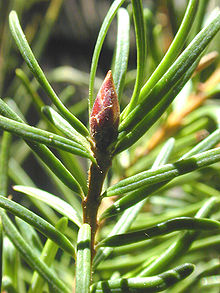 Douglas fir tree
Douglas fir tree
(Needles and a cone beginning to form)
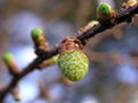
A larch cone
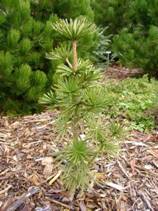 A miniature conifer
A miniature conifer
 Miniature conifers in a rockery
Miniature conifers in a rockery
 Conifers for sale – check the maximum height they will grow to on the label!
Conifers for sale – check the maximum height they will grow to on the label!
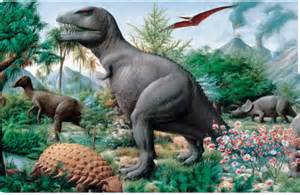 When dinosaurs ruled the world
When dinosaurs ruled the world
 Pre-historic ferns
Pre-historic ferns
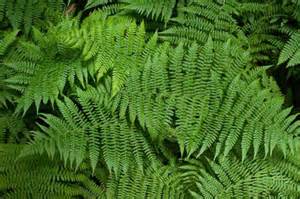 The ferns that you see today growing in woods and gardens
The ferns that you see today growing in woods and gardens
 Fern spores
Fern spores
 Be careful the conifers you choose won’t become too large for your garden!
Be careful the conifers you choose won’t become too large for your garden!
 Forest ferns won’t grow too big though
Forest ferns won’t grow too big though
 Cyads were around before the dinosaurs
Cyads were around before the dinosaurs
During the Jurassic Period 206 – 144 million years ago there were more cyads on Earth than any other type of plant
They look a bit like palms but they are more closely related to pine trees


 THE SALTY SAM NEWS DESK
THE SALTY SAM NEWS DESK

What do you call a dinosaur that’s short sighted?
Answer = Dyouthinkesaurus
Well of course that is just a little joke because as you know there weren’t any people around at the time of dinosaurs. Dinosaurs died out long before people evolved.
Dinosaurs roamed the Earth for over 160,000,000 years. People have been around for about 2,000,000 years.
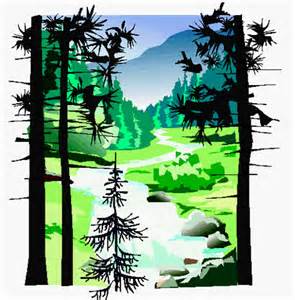
The biggest dinosaur was the titanosaur measuring 6m high and 40m long. It lived 100 million years ago.
We know these dinosaurs lived in Patagonia in South America because fossils have been found there. The titanosaur is the biggest animal the world has ever known.
The most famous dinosaur is probably the tyrannosaurus Rex. Children love them because they look so ferocious.
Several fossilized skeletons have been found and put on show around the world for people to get an idea of how truly big they were. These animals were up to 12 metres long and 7 tonnes.
A fossil is actually made from rock-like minerals that are bone-shaped. It is the same shape as the dinosaur bone but the original bone has been replaced by minerals.
The process of fossilization is the dissolving and replacement of the original bones with other minerals that come from the earth that covers the animal up after it dies. And of course not all animals fossilize. The conditions have to be right for this to happen and most remains decay away.

In fact, a lot of exhibits in museums are actually replicas made from fibreglass.
Different parts of the world have thrown up different kinds of dinosaur remains. In dinosaur times, there were different animals in different parts of the world just like there are today.
Dinosaurs’ bodies were a lot like the birds we have today. In fact, birds are living dinosaurs. Look at an ostrich from the side, look at its legs and the way it moves. Doesn’t it remind you of a dinosaur?
So did dinosaurs all have reptile skin on their bodies or did some of them have feathers?
What colours were they?
The more remains that are found, the more scientists know about dinosaurs.
There have been more T-Rex skeleton-fossils found in Montana, USA than in any other part of the world. It was here that scientists found a skeleton that amazingly still had cells, proteins and even 68 million year old soft tissue. It was parts of the dinosaur itself!
They may even possibly have found DNA. So will ‘Jurassic Park’ still be possible?
Who knows!


*********************
TO ADVERTISE ON THIS BLOG
PLEASE CONTACT:
christina.sinclair.ads@aol.co.uk
*********************


Pet Care
If you don’t want dinosaurs in your garden, but prefer to keep guinea pigs instead, then there are a few things you have to remember to keep them happy.
They live for 5-6 years, so are a long-term commitment.
Their hutch should be at least 1.5m/5 feet long in order to give them plenty of space. You will need to put hay in their litter tray and over the floor of the hutch. Never use wood shavings or sawdust for their bed.
Don’t leave the hutch outside in the garden in bitterly cold weather.
They need to be kept in a group with lots of friends as they are what is known as a herd animal.
Remember that 80% of their diet should be fresh, sweet-smelling hay and they can also eat grass out in the garden when you put them out in their run on a nice day; for at least 4-6 hours every day. They won’t want to be outside on a cold winter’s day so they will need an inside guinea pig play pen with tunnels that can be bought from a pet shop and hidey holes like flowerpots or folded blankets or towels. They would also like willow and fruit tree twigs (apple, pear, cherry) to chew on.
They can eat carrots, cabbage, turnips, curly kale and broccoli. They also like blackberry, strawberry, dandelion, mint, plantain and raspberry leaves.
Put a bowl in their hutch half-filled with their dry food – plain pellet food is best (it doesn’t have added colour and helps to wear down their teeth, which is a good thing). Wash this bowl at least once a week.
If they are off their food, it might be because their teeth are too long.
Don’t forget to give them fresh water every day in a guinea pig water bottle. Keep one spare bottle in case one gets broken. Don’t put it up too high so that the piggies strain to get at it. Clean the bottle thoroughly once a week with a bottle brush.
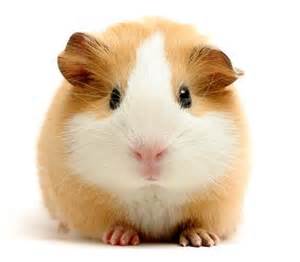
Also check your guinea pigs’ coats and claws regularly – at least once a month. Claws need clipping every month. Cut only the white part not the pink part and don’t do it with a shaky hand. Get a vet to show you how to do this properly if you don’t know how.
Guinea pigs will need a bath about four to five times a year with a special guinea pig shampoo – don’t forget to wash around their ears.
Put a towel in the bath so that your piggy doesn’t slip when you are showering them. Remove the shower rose first and hold your pet at an angle to keep the head up so that the water runs down their back not onto their face. Test the temperature of the water on your own hand before you begin – not too hot or cold.
Wet the piggy, then shampoo him or her according to the shampoo manufacturer’s instructions and after a while rinse the shampoo off.
Rub the piggy down with a warm towel and keep them indoors until they are dry. Give them some treats after their bath – they deserve them.
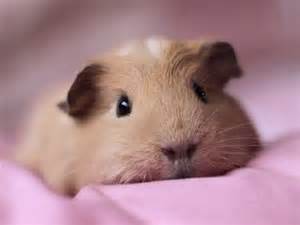
Clean the hutch with a pet disinfectant before you put your piggies back.
Find a good pet shop that can give you advice on buying food and accessories.

BLOW MY FOGHORN!!!

PLUS
Salty Sam fans can join in with their comments and share them with children all over the world. You will need to ask permission if you are not an adult.
Enter your e-mail address to subscribe to my blog and receive new Salty Sam Blog Posts for free by e-mail every week. Your address will be kept private and will not be shared with any third party.
Sign me up at the side bar




lt’s the Weekend!
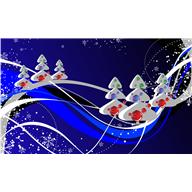
HOW TO USE A CONlFER DESlGN
A conifer shape is easy to draw, easy to work with and instantly recognisable. There are many ways you can use it to add a seasonal touch to items around the home.
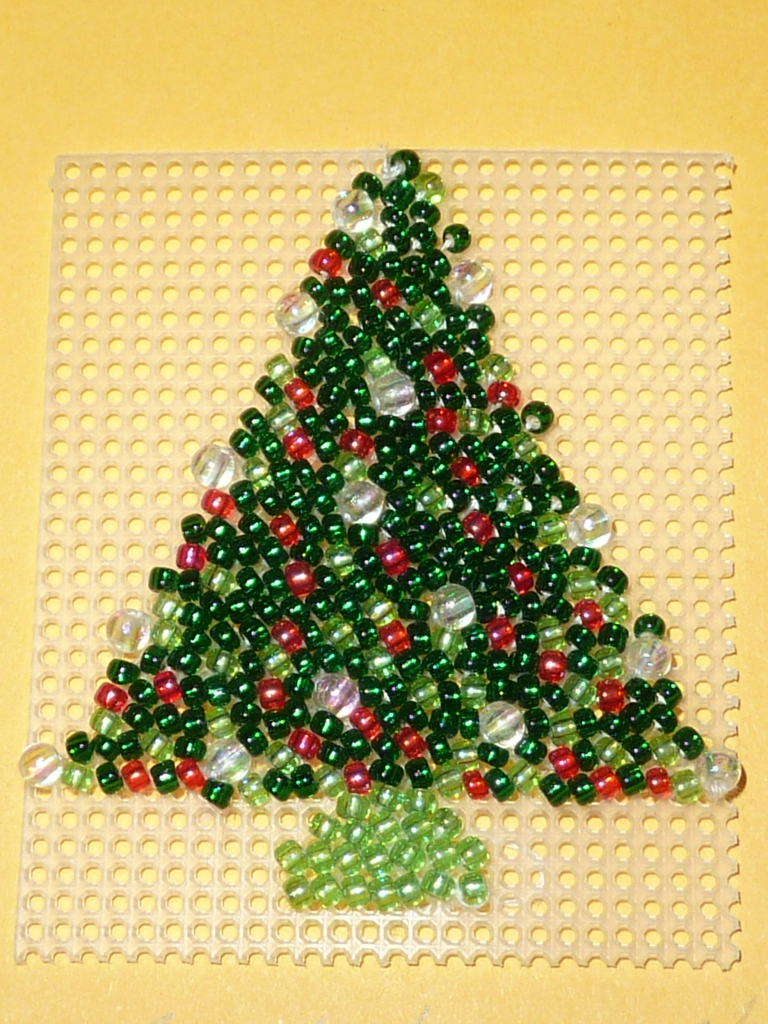
When embroidering any item that will be seen from the back like a napkin or table cloth it is a good idea to choose a pattern to use that is not too complicated and will, therefore, not be too messy when seen from behind.
This conifer design is made from a series of strips of embroidery stitches. You can use it to decorate tableware or bed linen. Or if you want a simpler shape, use a triangle with a square pot at the bottom and embroider a random pattern inside the outline.
Mark out the outline of the conifer to begin with to help you keep your stitches straight. Make a paper pattern so if you embroider more than one tree, they will all be the same size. Fold the pattern in half so that you can check that it is symmetrical before you use it.
Don’t sew your motif too close to the edge of the fabric if you want to hold your work in a hoop. Otherwise you could make your own napkin out of the fabric after the motif has been worked. You could decorate a plain tablecloth you have bought ready-hemmed from a shop. You can put the trees around the edge or in a random pattern across the whole cloth.
This cloth would be perfect to put on a side table with all your sweets and nuts at Christmas.
You can use one shade of green, several shades of green or a green rainbow thread. Of course you don’t have to embroider a green tree at all; it could be any colour you like and you can use any stitches you feel you can do well.
The design in the chart below can be used on fabric or used around the bottom edge of a sweater. Swiss darning would be the easiest thing to use.
|
x |
||||||||||||||||
|
x |
||||||||||||||||
|
x |
||||||||||||||||
|
x |
x |
x |
||||||||||||||
|
x |
x |
x |
||||||||||||||
|
x |
x |
x |
||||||||||||||
|
x |
x |
x |
x |
x |
||||||||||||
|
x |
x |
x |
x |
x |
||||||||||||
|
x |
x |
x |
x |
x |
||||||||||||
|
x |
x |
x |
x |
x |
x |
x |
||||||||||
|
x |
x |
x |
x |
x |
x |
x |
||||||||||
|
x |
x |
x |
x |
x |
x |
x |
||||||||||
|
x |
x |
x |
x |
x |
x |
x |
x |
x |
||||||||
|
x |
x |
x |
x |
x |
x |
x |
x |
x |
||||||||
|
x |
x |
x |
x |
x |
x |
x |
x |
x |
||||||||
|
x |
x |
x |
x |
x |
x |
x |
x |
x |
x |
x |
||||||
|
x |
x |
x |
x |
x |
x |
x |
x |
x |
x |
x |
||||||
|
x |
x |
x |
x |
x |
x |
x |
x |
x |
x |
x |
||||||
|
x |
x |
x |
x |
x |
x |
x |
x |
x |
x |
x |
x |
x |
||||
|
x |

Use different types of embroidery stitches to create vertical strips up the conifer outlined in the chart above

Alternatively, you could embroider the same panel on a piece of fabric, cut it out and turn it into a hanging decoration. But don’t forget to allow extra around the sides for hems!

- Sew right sides together leaving a gap in the bottom centre for turning and stuffing.
- Turn out the right way and lightly stuff.
- Sew up the gap incorporating a rectangle of felt to make a trunk.
- Make a loop and push the ends into the top of the tree – sew into place.

Or you can make a plain felt decoration and decorate with beads and sequins. You won’t need seam allowance for this conifer.

Don’t embroider your pattern too close to the edge and over-sew the edges wrong sides together leaving a gap to add a little stuffing before you finish sewing.


If you can find a piece of plastic canvas with very small holes, you could construct a conifer entirely of beads.

Use mostly green ones with a few extra colours for the decorations. Sew them onto the canvas in a conifer shape. You can then cut away the surrounding canvas if you want to and tie a loop of thread into the top.


Please note that the material on this blog is for personal use and for use in classrooms only.
It is a copyright infringement and, therefore, illegal under international law to sell items made with these patterns.
Use of the toys and projects is at your own risk.
©Christina Sinclair Designs 2015

For an Embroidery Stitches Chart
Check out Blog Post 3
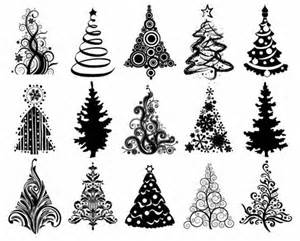
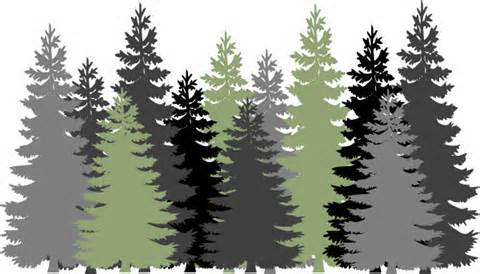



I have been absent for a while, but now I remember why I used to love this site. Thanks, I will try and check back more often. How frequently you update your web site?
Thank you for writing in David.
A new blog post is released every Fun Friday.
See you again soon. 🙂
Wow, awesome blog layout! How long have you been blogging for? you make blogging look easy. The overall look of your website is magnificent, as well as the content!
Thanks for your comments fatid. This is year four of my blog.
“Thank you ever so for you blog post.Much thanks again. Cool.”
You’re welcome!
I’ve read several good stuff here. Certainly worth bookmarking for revisiting. I surprise how much effort you set to create any such magnificent informative web site.
l am really glad you like my website. Thank you for writing in!
Enjoyed every bit of your article.
Thank you!